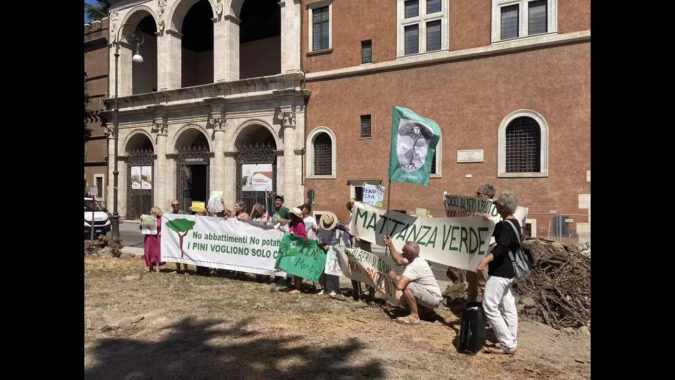Celebrated in music and art, and admired by the ancient Romans, the trees are as much a part of the city’s identity as its human-made landmarks.
“They are in the hearts, photographs and memories of everyone,” said Jacopa Stinchelli, who is helping lead the defense of the pines, which in recent years have taken a mangy turn.
An infestation of a pernicious and invasive insect known as the pine tortoise scale, which sneaked into Italy about a decade ago, has killed many trees.
In the eyes of some Romans, however, it’s not just the bugs that are to blame for the demise of so many umbrella pines, but also the city government.
Critics say the pines have been subjected to overly zealous and indiscriminate culling, with trees being removed that could still have been saved. Although an exact census of how many umbrella pines have been recently felled in Rome does not exist, activists claim that during the past two years, at least 4,000 potentially curable trees have been chopped down while many acres of pine forests in the city’s outlying areas have been destroyed by the pest.
The pine tortoise scale, native to North America, was first spotted in Italy in Naples in 2014 and quickly spread.
The primary method to counter the pest in urban areas involves injecting an insecticide into the tree to kill the female population. As with vaccines, there is a first dose and then a booster, which critics say has not been given to many trees.
Researchers are seeking other techniques, including importing the pest’s natural predators if that can be done without environmental risks, said Pio Federico Roversi, the director of a national research center for plant protection. “We can’t imagine a future where for the next 100 years pines will be on a drip feed. It would no longer be nature, it would be a hospital.”
